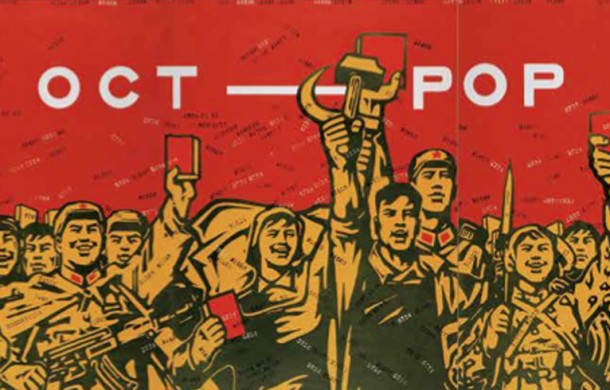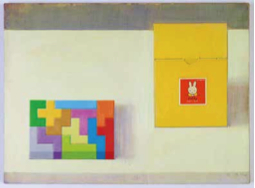MUSEUM COLLECTIONS: A SELECTIVE ACCOUNT
| May 10, 2013 | Post In LEAP 18

For this report, LEAP sent surveys to more than a dozen public and private museums on the Mainland, through the results attempting to gain insight into the state of museum collection in China today. Due to busy schedules or administrative reasons, a few of these institutions tactfully declined or demonstrated it was inconvenient to participate in the interviews. But at the same time, our research was generously enabled by the cooperation of the directors of the museums below. Survey responses were provided either by the directors themselves or appointed directors of their collections. The interviews demonstrate that, apart from the Guangdong Museum of Art, a public institution, acquisition counter to the relatively buoyant state of the domestic art market in China and also reflects a level of uncertainty among the newer museums about art history as it is written. The crucial question is: what are the similarities and differences between private collections and those in art museums? How should art museums demonstrate their public function and vitality? Will Chinese museum-goers of the future be able to discern from these diverse and divergent collections the individual parts and the bigger picture of Chinese art history?
Does your museum have a plan for making regular acquisitions?
GUANGDONG MUSEUM OF ART Every year we outline an acquisition plan for the following year based on the state of our collection, our incremental goals, and the allocated funds. We submit the plan to our Board of Trustees and follow their recommendations.
TODAY ART MUSEUM Every year, we select works for our collection based on consultation from an academic committee.
ULLENS CENTER FOR CONTEMPORARY ART The UCCA is an exhibition-driven, rather than a collection-driven, institution. We exhibit works from the Ullens Collection as well as from other collections and from artists directly, but the UCCA as such does not engage in collecting.
OCT CONTEMPORARY ART TERMINAL From 2005 to 2012 OCAT has not had a regular acquisition plan or budget. Most of our artworks are donated by the artists or are in public ownership.
TIMES MUSEUM We are in the process of creating one.
What is your museum’s average annual budget for collection? What percentage is allocated to purchases and what percentage is used for conservation work?
GUANGDONG MUSEUM OF ART The funds for our collection are allocated directly by the provincial government. We have benefited from the government’s focus on increasing the province’s cultural prestige, and our budget has gone up each year. As for the percentage used for restoration and preservation, it is strictly set at no more than 5% of the amount used for adding to the collection. If there is a need for expenditure on equipment, this can go up to 8% with government approval.
TODAY ART MUSEUM We are not at liberty to discuss our budget.
ULLENS CENTER FOR CONTEMPORARY ART We do not have an acquisitions budget or engage in acquisitions.
OCT CONTEMPORARY ART TERMINAL None.
TIMES MUSEUM We are still in the planning stage, and do not have one yet.
Please describe the current state of your collection and the direction it is taking.
GUANGDONG MUSEUM OF ART Given our location, our building’s history, and the fact that we are a modern and contemporary art museum, we focus our collection and research on Cantonese art, modern and contemporary Chinese art, art produced by overseas Chinese, and world art. In our collection we emphasize the “coastal”— which is significant in the history of modern art because the cultures of East and West amalgamated and collided in coastal areas. Another method is selecting artworks that embody the contemporariness of artistic expression and development. We have from the outset created our own style of research into— and methods for collecting— contemporary art. We strive to look outside of local context, to build a framework for the history of modern and contemporary Chinese art.
TODAY ART MUSEUM We mainly acquire contemporary art, the direction for which is set by a committee of senior curators and scholars. It could be said that we concentrate on experimental works that reflect on or represent the contemporary world.
TIMES MUSEUM A museum’s collection should develop along with the museum, and should be instrumental in creating its culture. In this respect, Times Museum is still at an exploratory stage, and we wish to develop our own clear path by continually experimenting. As a private museum, our responsibilities are different to those of a public museum, but we still have a role to play. One of our main goals will be to emphasize the connection between life and art. We also want to use the power of art to change the way people see and understand the world. We will use our collection to encourage this kind of artistic creation. Times Museum is also a site for knowledge production, encouraging the creation and stimulation of new ideas, and so another aspect of our collection will be the collation of archival materials related to our research themes.
What are your most recent acquisitions? How were they acquired?
GUANGDONG MUSEUM OF ART We have recently acquired Sa Qi’s Woman and the Sea (oil painting), Xiao Shufang’s Mandarin Fish (oil painting), and several woodcuts by Zhao Yannian. Early oils and woodcuts are both well represented in our collection. These artworks add to our “Twentieth-Century Chinese Art” exhibition and constitute a valuable contribution to our research on the history of twentieth-century Chinese art. We acquire artworks at major domestic auctions and through the artists themselves.
TODAY ART MUSEUM Li Jikai’s Standing Figure, donated by the artist.
TIMES MUSEUM We have acquired some artworks and material from some of the artists
who have exhibited here.
What will the artworks in your collection be like 20 years from now? What function will they serve?
GUANGDONG MUSEUM OF ART It is our hope that in twenty years’ time our collection will be even more complete, that it will provide a clear record of and high quality material for Chinese art-historical research. We also hope that our collection will become more standardized, in line with international collections, and that we become an art museum in the truest sense of the word. We hope our artworks will better serve the public, scholars, and artists, that they demonstrate their artistic value and social significance, contribute to promoting the arts industry, encourage art and culture to flourish, and otherwise serve to improve the character of the people.
TODAY ART MUSEUM For a museum, the collection represents an intangible asset. Artworks in the permanent collection represent the memory of an era and an evaluation of that era’s art. On the other hand, it is also a publicly-owned asset that serves to record public memory and improve public cognizance of art.
ULLENS CENTER FOR CONTEMPORARY ART I do not see the UCCA evolving into a collecting institution, but I believe there will be better and stronger ties to Chinese collectors whose works will come to be exhibited in our various exhibitions over the coming years.
OCT CONTEMPORARY ART TERMINAL An art museum is a living organism. It is in constant motion, and expressing itself. OCT Contemporary Art Terminal’s collections will grow around its exhibitions and research projects. These projects will guide our acquisitions. Depending on the topics, we may collect paintings, sculpture, installations, or video. Or we may collect various kinds of thought-based or conceptual work, such as texts, documents, or performance art. An art museum can use its collections to make a record of itself, to express itself, and to manifest its personal value system. (Translation by Vanessa Nolan)


